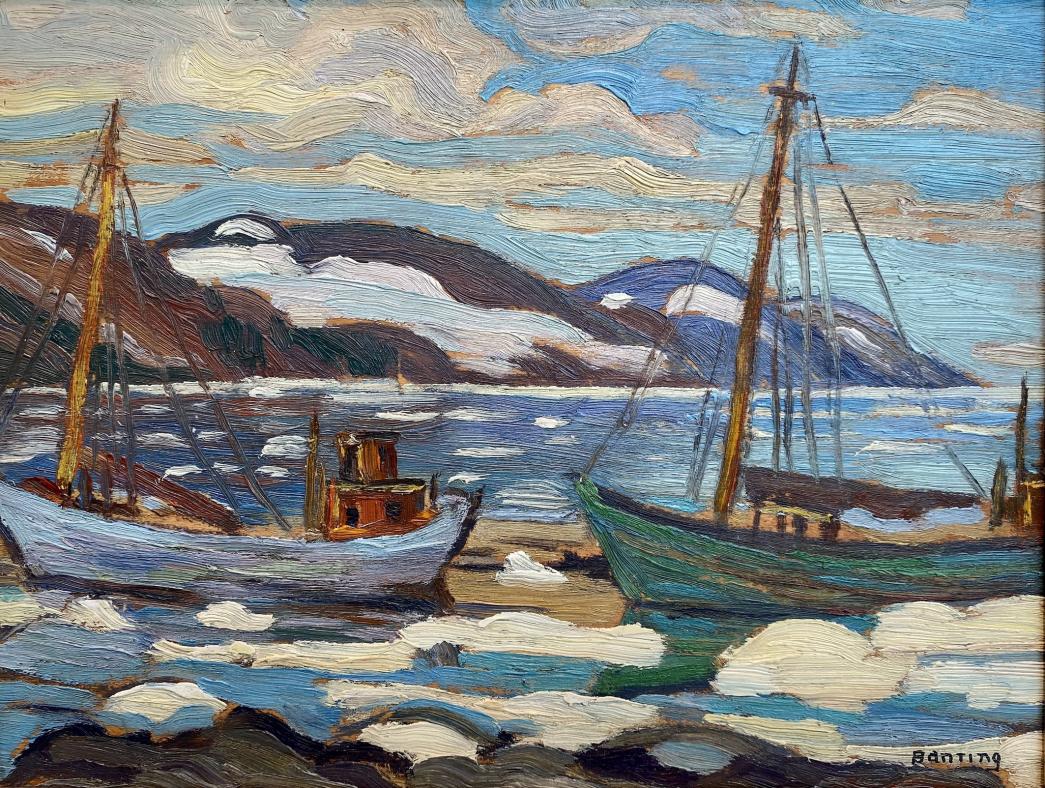Sir Frederick Banting - Gaspé, Quebec
- Gaspé, Quebec
- Oil on Board
- 8.5 x 10.5 in
- 1931
- Sold
- Private Collection
signed and inscribed on verso
In 1925, fame rested heavily on the shoulders of Sir Frederick Banting, whose name had become closely associated with the discovery of insulin 3 years earlier. A reticent man, Banting found public speaking difficult and the hounding of the press unbearable. He found relief from the rigours of professional life through his passion for watercolours and sketching. This interest led him to membership in Toronto's Arts and Letters Club, the meeting place for some of Canada's best-known artists, including the Group of Seven. Banting became friends with the group's founding member and one of Canada's leading landscape artists, A.Y. Jackson. At first glance the scientist and artist might appear to have little in common, but there were many common threads. Both men served on the Western Front during WW I, and both had been wounded and convalesced in England. Both had an interest in military art and a passion for the outdoors and landscape painting. Over the next 16 years, Jackson invited Banting to accompany him on a number of his sketching trips - some lasting as long as 2 months. They sketched from the Georgian Bay area to wintertime rural Quebec; there, they billeted with local farm families. They also travelled to the Eastern Arctic, where they became the first artists to sketch Hudson Bay trading posts. For Banting, these trips meant a break from the pressures of his medical research. Jackson was a mentor and teacher, often looking over Banting's work and making suggestions for improving it. At the time of his death in 1941, Banting was one of Canada's best-known amateur painters. It was reported that Banting's death in a plane crash hit Jackson just as hard as the death of another good friend and sketching partner, Tom Thomson, a quarter of a century earlier.
